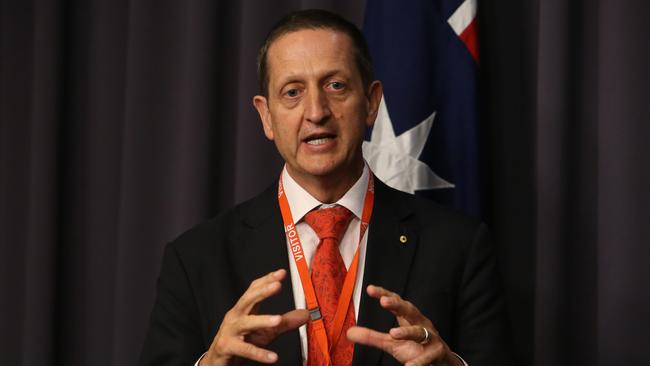JobKeeper aid ‘helped prevent 500 suicides’
The government’s income support and JobKeeper programs prevented almost 500 suicides and more than 4000 hospitalisations, according to independent health modelling.

The government’s income support and JobKeeper programs prevented almost 500 suicides and more than 4000 hospitalisations, according to independent health modelling that also said ongoing job support would help stem the pandemic’s continuing mental health impacts.
The mental health research institute at Sydney University said the JobKeeper program was likely to have prevented about 51,490 mental health presentations at emergency departments between 2020 and 2025.
A world-leading model developed by the university’s Brain and Mind Centre last year predicted a spike in suicides related to the economic shutdown triggered by the first and second COVID waves.
That model has since been revised following the economic and income support packages to keep people tied to their jobs and boost welfare payments for those who lost them.
“This revised model estimates that government action in 2020, primarily JobKeeper, will likely contribute to the prevention of 469 suicide deaths, 4226 self-harm hospitalisations and 51,490 mental health-related ED presentations over the period 2020-25,” a report by the centre said.
“The economic supports put in place in the wake of the pandemic (including JobKeeper to stem job loss, mortgage deferrals and moratoriums on rental evictions) and a delay or initial decline in suicide deaths known … have likely provided effective protections against the significant adverse suicide outcomes projected under the ‘do nothing’ / baseline scenarios originally projected in the Road to Recovery modelling report.”
Co-director of the centre Ian Hickie, who has been critical of the government’s commitment to boosting mental health services, said while more needed to be done on services, the most important measure the government could undertake to reduce mental health stress and preventable suicide was to maintain economic growth and employment.
“The three most important things the government can do for suicide prevention are jobs, jobs and jobs,” Professor Hickie said.
“While ongoing job support is critical in those industries most disrupted, and in those regions most affected, the most important factor for strong mental health will be a strong economy and a continuing fall in unemployment and underemployment.”
He said most suicide deaths occurred in men: in 2019, males accounted for 75.4 per cent of the 3318 suicide deaths in Australia.
“Given that the temporary economic protections … benefited men to a greater extent, Australia has been successful to date in preventing an overall increase in suicides in 2020,” the report said.
“Building on the program of systems modelling undertaken by the Brain and Mind Centre, University of Sydney, an age and gender stratified system dynamics model of the social and economic impacts of COVID-19 on population mental health outcomes in Australia has been developed.
“This model is an extension of the national model developed in 2020, which has been refined on the basis of empirical data on unemployment, underemployment and workforce participation over 2020 … and updated data on psychological distress from the Australian Bureau of Statistics resolving previous uncertainty around the duration of economic protections and providing a clearer picture of the mental health trajectory Australia is likely to experience.
“Despite a more rapid economic recovery than projected … in mid-2020, revision of model inputs with new empirical data continue to forecast negative population mental health outcomes associated with the social and economic impacts of COVID-19.”




To join the conversation, please log in. Don't have an account? Register
Join the conversation, you are commenting as Logout